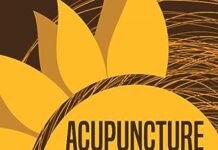Ebook Info
- Published:
- Number of pages: 110
- Format: PDF
- File Size: 1.81 MB
- Authors: Dr.Yang Morimoto
Description
Acupuncture is one of the primary treatments under the umbrella of Chinese and East Asian medicine, and it has been around for a very long time. Its first mention in writing was around 100 BCE, but many scholars believe its use goes back several centuries before that. Despite its long history in the East, acupuncture has only been accessible in the United States for a relatively short time. While early users of acupuncture in the West touted its efficacy, it has taken a long time for popularity to heat up. The philosophies of Chinese medicine differ greatly from what many of us grew up with in the West, and translation issues have compounded the general mistrust and confusion. This has led many Westerners to argue that acupuncture is just a placebo, meaning that you need to “believe” in it for it to work. The treatment itself involves the insertion of hair-thin needles at specific points on the body to promote balance and healing. We will get more into the how and why in later chapters, but here is a brief overview: In Chinese medicine, health depends on a delicate balance of Yin and Yang in the body. Yin and Yang become imbalanced when the flow of Qi (pronounced Chee) becomes interrupted or blocked. Qi—a very important concept in acupuncture —is the life force that regulates all of the body’s processes. It flows through meridians, or channels, in the body to the 12 organs, which have more to do with function than physical form (you will see these organs capitalized throughout the book to make this distinction). Any interruption or blockage in the flow of Qi in one of the 12 organs or its corresponding meridian can cause an imbalance of Yin and Yang and lead to illness. This balance of Yin and Yang relates very closely to the Western idea of homeostasis—the delicate balance of all of the body’s systems, which is essential to maintaining health. But as any acupuncturist will tell you, acupuncture involves far more than just the insertion of needles. Chinese medicine utilizes a much more holistic approach than most modern Western medicine, which tends to be more segmented and specialized. Whereas a conventional Western medicine practitioner would identify and treat a symptom, an acupuncturist will take note of the symptom, and then, like a good detective, use that as a clue to identify a pattern of imbalance in the body that may be causing your symptoms.
Reviews
Acupuncture
Free Download
